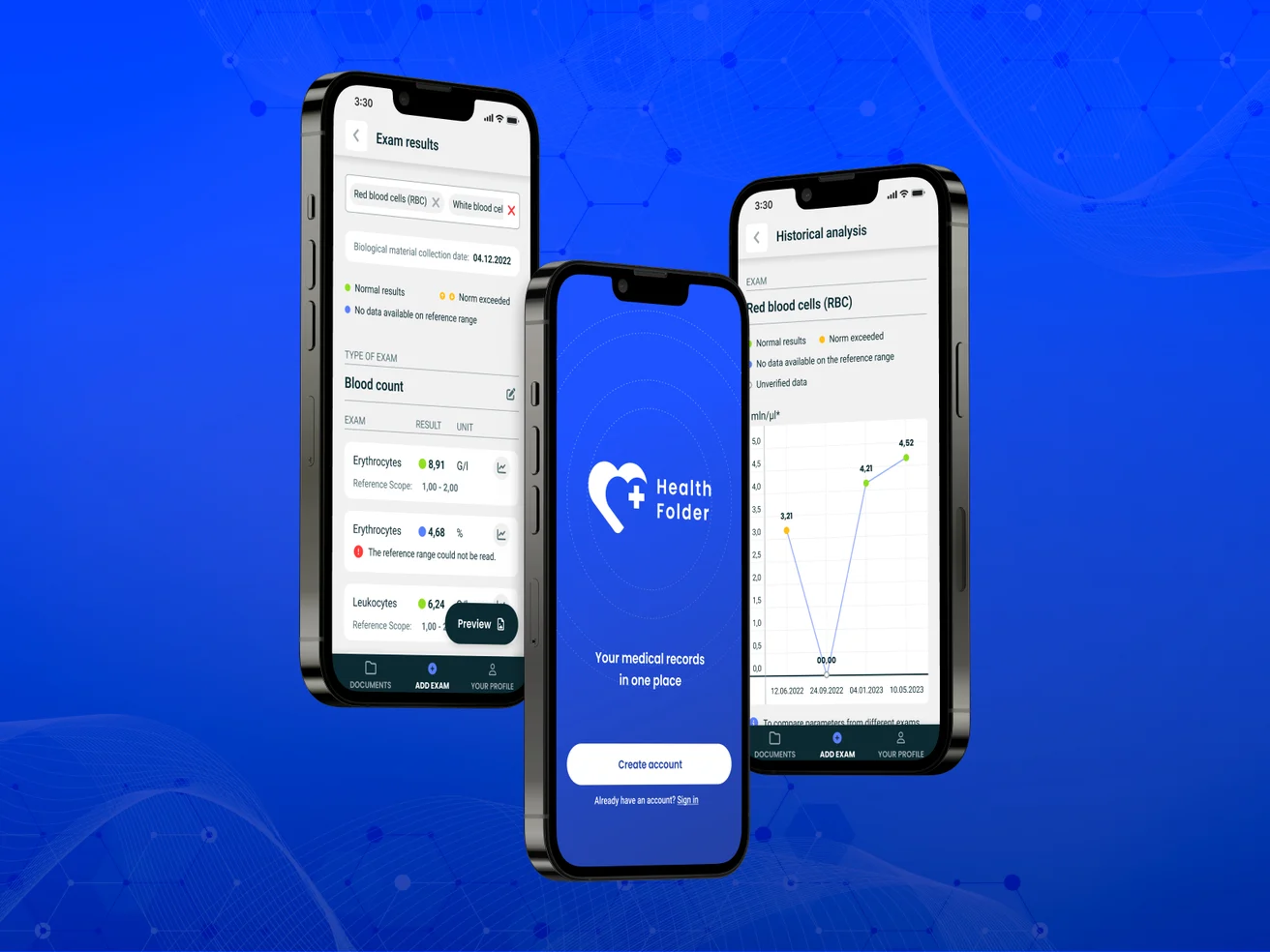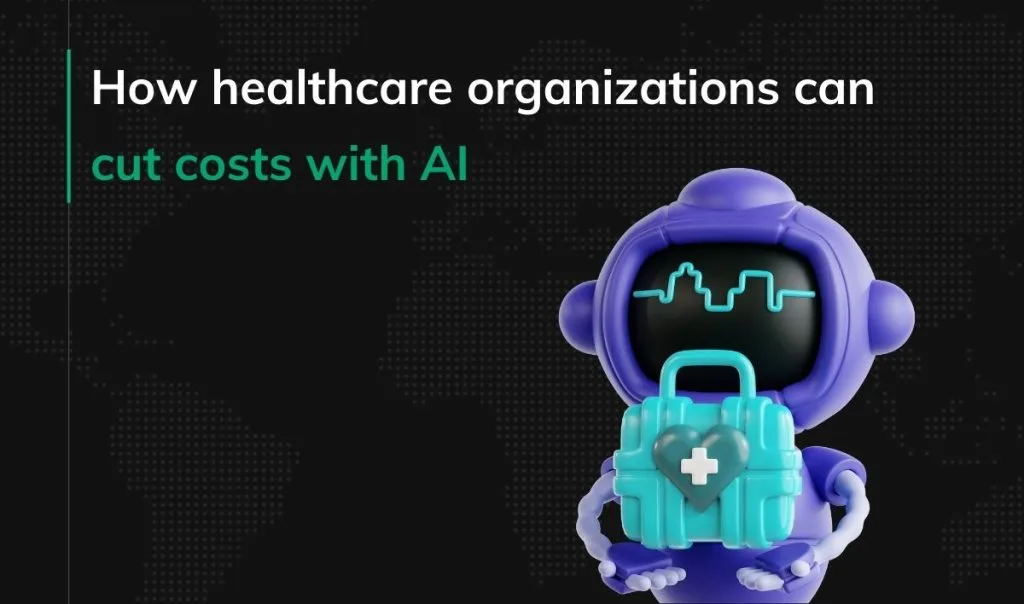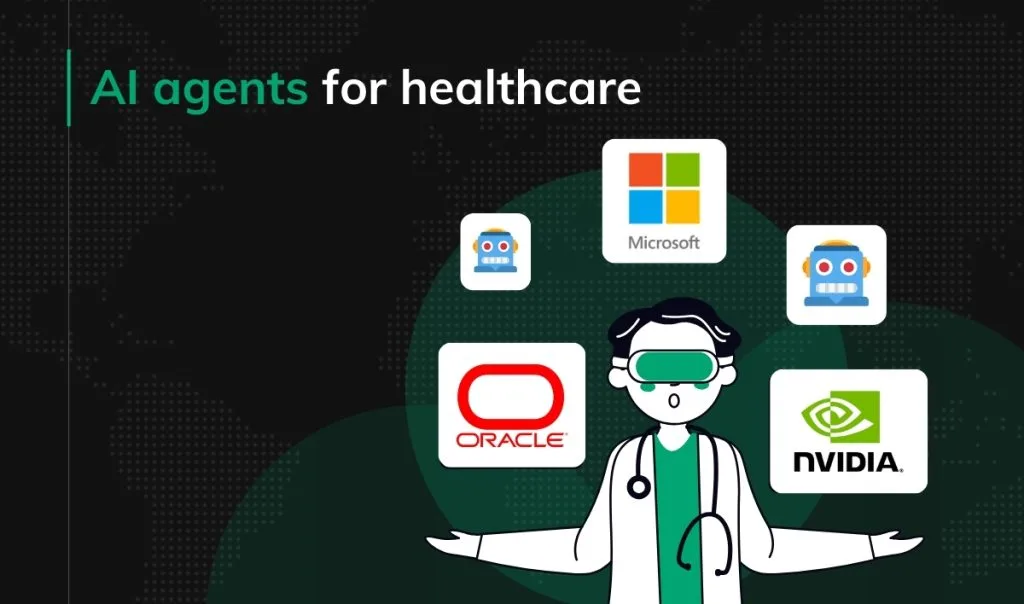Medical imaging software development
We build customized solutions that transform healthcare diagnostics
AI integration
We have experience in integrating AI into our products. Our custom imaging solutions leverage machine learning and computer vision for enhanced image analysis and diagnostic support.
User-friendly solutions
Our UX specialists ensure that our custom-built medical imaging software is intuitive, easy to learn, and equipped with the features that healthcare professionals need and want.
Cloud compatibility
By leveraging cloud technology, our custom solutions are flexible and can be accessed remotely without the need for powerful workstations. They are also designed with scalability in mind.
Compliance and security
We build our medical imaging software with a focus on regulatory compliance and data security. Robust encryption and modern security protocols are the pillars of our solutions.
Health Folder: Your AI-based digital medical documentation folder
Discover how Health Folder revolutionizes medical documentation management with its AI-powered mobile app built using low code.
Read the case study
Our digital health software development process
This is how we work
Deliver & Scale
- Product Development
- DevOps Architecture
- Continuous User Feedback & Delivery
Medical Imaging Software FAQ
Everything you need to know about custom medical imaging software and its development process.
What is medical imaging?
Medical imaging is the technique and process of creating visual representations of the interior of a body for clinical analysis and medical intervention. It encompasses a wide range of technologies that utilize different forms of energy, such as X-rays, magnetic fields, sound waves, and radioactive isotopes, to produce images of the body's internal structures. These images provide valuable insights into the anatomy, physiology, and pathology of the human body, enabling physicians to diagnose and treat a wide range of medical conditions.
What is used in medical imaging?
Various tools and technologies are employed in medical imaging, including:
X-ray machines: Produce images by passing high-energy electromagnetic waves through the body.
CT scanners: Utilize X-rays to create detailed cross-sectional images of the body.
MRI scanners: Employ magnetic fields and radio waves to generate high-resolution images of organs, soft tissues, and bones.
Ultrasound machines: Generate images using sound waves that bounce off internal structures.
Nuclear medicine imaging: Uses radioactive tracers to visualize specific functions or processes within the body.
Additionally, medical imaging software plays a critical role in the field:
Image Processing Software: These sophisticated programs enhance and analyze the images captured by various imaging modalities. They can adjust contrast, brightness, and perform advanced functions like 3D reconstruction, segmentation, and quantification of specific areas of interest.
PACS (Picture Archiving and Communication Systems): PACS are essential for storing, retrieving, managing, and distributing medical images electronically. They allow healthcare providers to easily access patient imaging records from different modalities, facilitating better diagnosis and treatment planning.
AI and Machine Learning Algorithms: These cutting-edge technologies are increasingly being integrated into medical imaging software. They assist in detecting patterns, diagnosing conditions, and predicting outcomes more accurately and quickly than traditional methods, thereby enhancing the overall efficiency of diagnostic procedures.
What are the examples of medical imaging software?
Numerous medical imaging software applications exist, offering diverse functionalities and catering to various medical specialties. Some prominent examples include:
PACS (Picture Archiving and Communication System): Manages and stores medical images for easy access and retrieval.
RIS (Radiology Information System): Schedules and manages radiology procedures and patient data.
3D rendering software: Creates detailed 3D representations of anatomical structures from medical images.
Image analysis software: Automates image processing and analysis to detect abnormalities and provide diagnostic support.
What is cloud-based medical imaging software?
Cloud-based medical imaging software is hosted and managed on remote servers, allowing users to access and utilize it through an internet connection. This approach offers several advantages, including:
Scalability: Easily adapts to changing data storage and processing needs.
Accessibility: Users can access the software from anywhere with an internet connection.
Reduced IT costs: Eliminates the need for local hardware installation and maintenance.
What's the best medical imaging software?
The choice of medical imaging software depends on specific requirements, such as the type of imaging modality, clinical applications, compatibility with existing systems, and individual needs. No single software solution can be considered universally "best" as each has its strengths and limitations.
Custom-made medical imaging software is often the optimal choice. It is made to fit the specific needs of a clinic, hospital, or institution. This means it works well with the types of scans they use and fits into their daily work smoothly. Also, this software can change and improve over time, keeping up with new medical practices. This makes it a great option for doctors who want the best tools for patient care and accurate diagnoses.
Are you a medical imaging software company?
Pragmatic Coders is a product development company specializing in crafting digital health solutions, including medical imaging software. We possess extensive expertise in developing innovative and tailored software solutions that meet the needs of healthcare providers and their patients.
How to install medical imaging software?
The installation process for medical imaging software varies depending on the specific software and hardware configuration. Generally, it involves:
Hardware setup: Ensuring compatibility with the software's hardware requirements.
Software installation: Installing the software on the designated server or workstation.
Configuration: Setting up network connectivity, user permissions, and other system parameters.
Data integration: Importing existing medical imaging data into the software system.
Testing: Verifying the software's functionality and ensuring data integrity.
A tremendous value that Pragmatic Coders brings to the table is that when we submit a user story, they don’t just take it and start working on it. They conduct a comprehensive internal review of the user story and come back with questions that push us to think of aspects that we didn’t consider. They really challenge us so that we don’t miss any requirements or make assumptions in our user stories.

Our other healthcare software services
Medical Practice Management Software Development
Learn moreLet's talk
We’ve got answers on anything connected with software development.
Message us
Feel free to reach out using the form below, and we’ll get back to you as soon as possible.
Schedule a meeting
You can also schedule an online meeting with Wojciech, our Senior Business Consultant.

founders who contacted us wanted
to work with our team.
Check our digital health-related articles
Newsletter
You are just one click away from receiving our 1-min business newsletter. Get insights on product management, product design, Agile, fintech, digital health, and AI.






